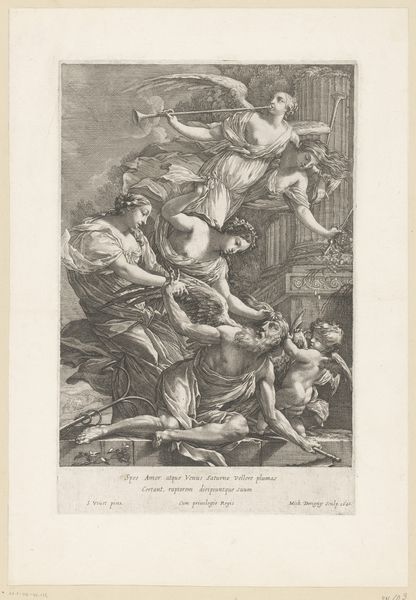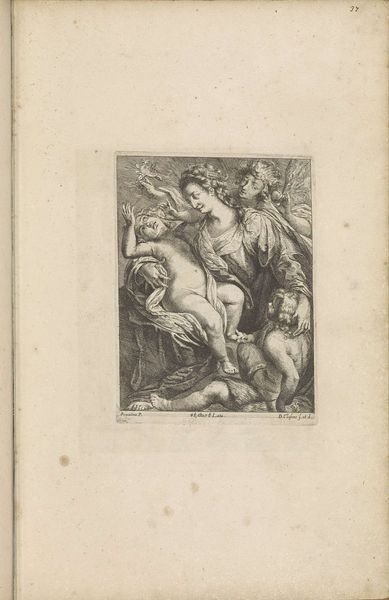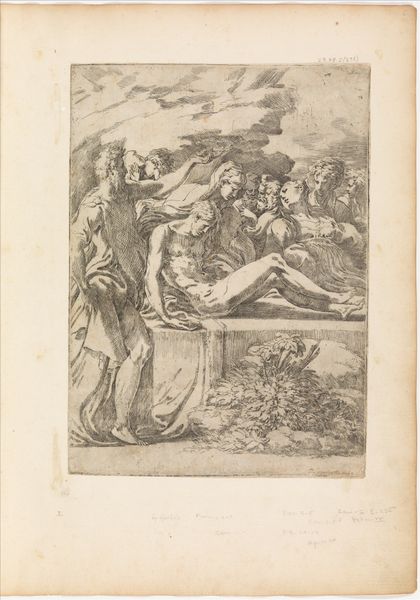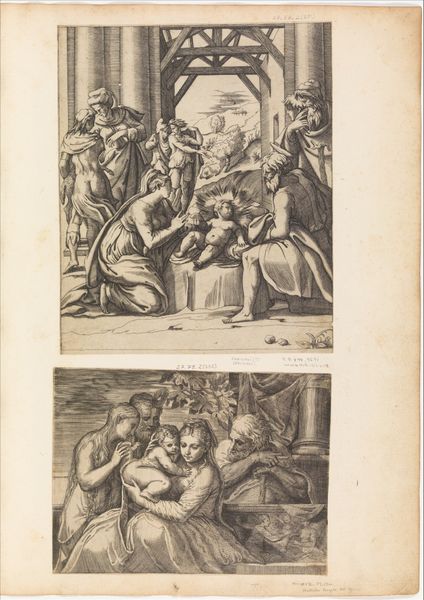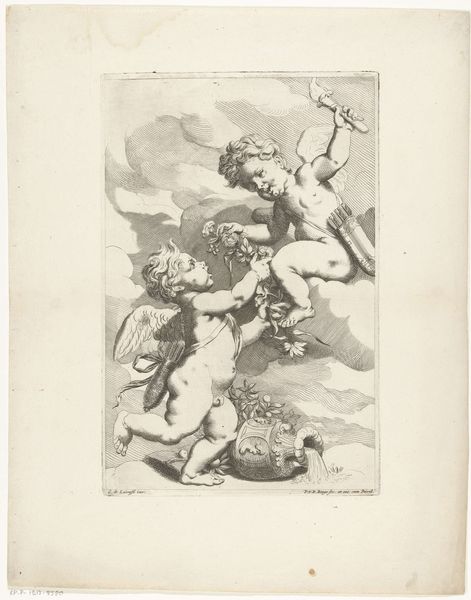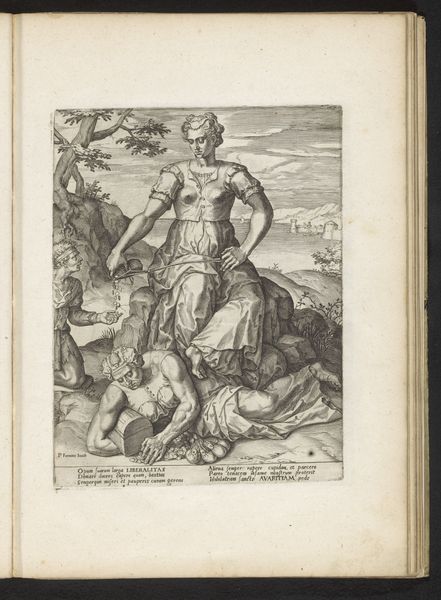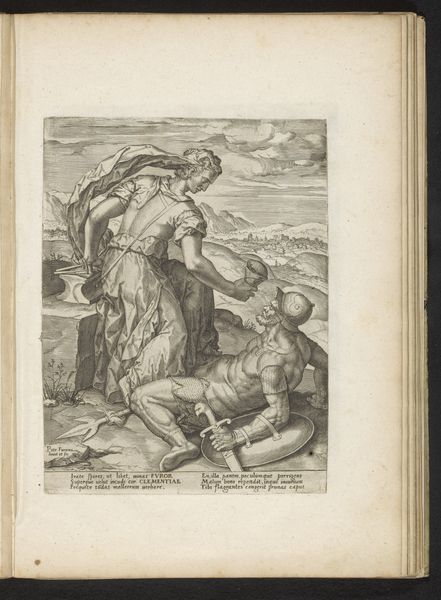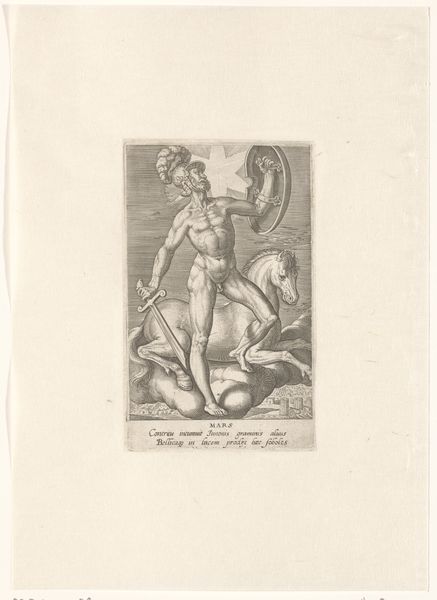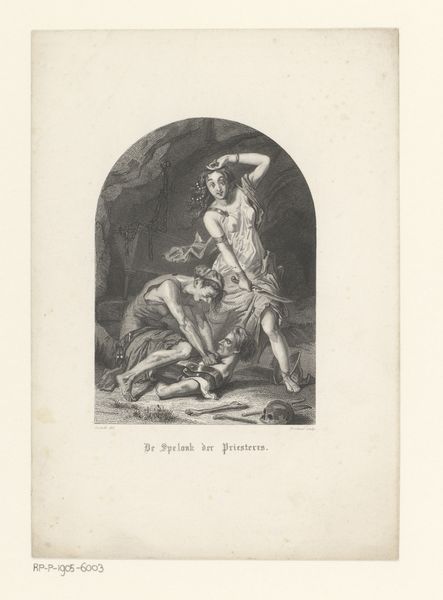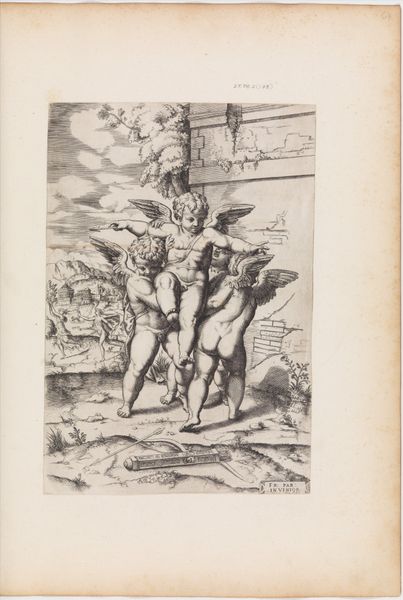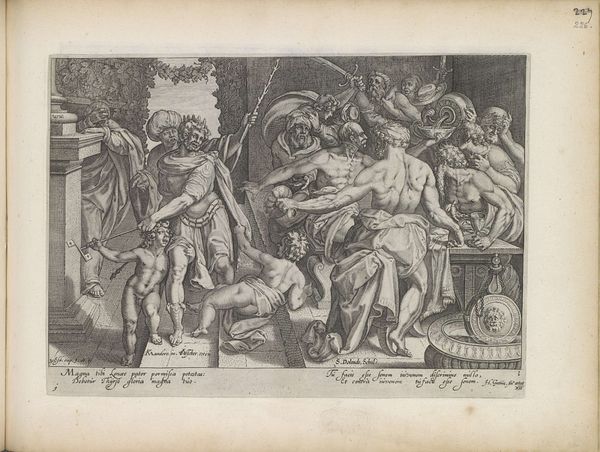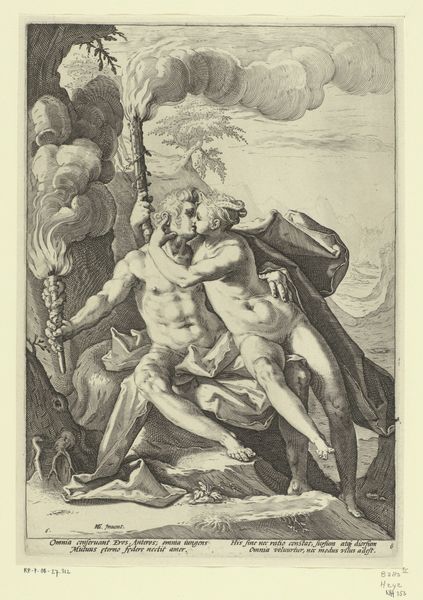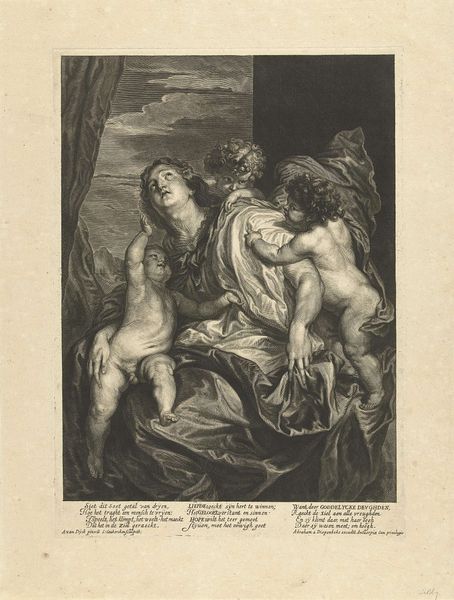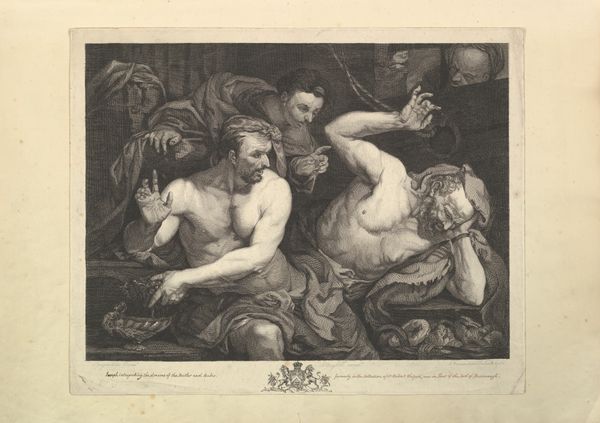
drawing, print, ink, engraving
#
drawing
#
ink drawing
# print
#
figuration
#
ink
#
ancient-mediterranean
#
history-painting
#
italian-renaissance
#
nude
#
engraving
Dimensions: plate: 9 3/16 x 6 3/8 in. (23.4 x 16.2 cm) platemark sheet: 16 1/16 x 10 7/8 in. (40.8 x 27.6 cm)
Copyright: Public Domain
Curator: We're looking at "Neptune Seated Blowing a Conch Shell," an engraving made in the 16th century. The artist is unknown, adding a layer of mystery to its history. Editor: The first thing that strikes me is the figures' physicality, that Renaissance muscularity. But there's something almost…strained in their poses. The whole composition feels tense, not triumphant. Curator: Yes, that tension is key. Neptune is traditionally associated with power and dominion, but here, that conch shell seems less a symbol of authority and more like an instrument for… summoning something. It calls to mind ancient sea deities whose influence has waned. Editor: The composition reinforces that feeling. We’re looking up at Neptune, but he's boxed in. Those flanking figures, the dark background - it all feels confining, despite the potential vastness the sea usually evokes. What do you make of those accompanying figures, particularly the one seemingly crushed under Neptune? Curator: Ah, that figure trapped beneath Neptune... he appears almost serpentine. Neptune represents dominion over chaos and the taming of nature; what if this print represents the suppression of an older belief system, a primordial god pushed under by the new Olympian order? That would underscore the psychological undercurrents at play. Editor: That interpretation aligns with the political function of art at that time, the ways in which images legitimized emerging power structures. We could also view Neptune, and representations of classical themes generally, as assertions of cultural supremacy. Whose story gets told—and how—is always a question of power, isn't it? Even in a mythological image like this. Curator: Exactly, it's fascinating how these seemingly simple iconographies carry layers of socio-political coding that we unpack with contemporary thinking and methods of criticism. Seeing how the Renaissance grapples with the symbolic echoes of the classical world invites introspection to what meanings it leaves behind and which persist. Editor: Absolutely. Examining how cultural symbols morph and adapt through changing social landscapes is essential work. The narratives we tell ourselves shape our world. Thank you for these interesting insights. Curator: My pleasure. Every artistic encounter can lead to insightful discovery about the self, society, and symbols through time.
Comments
No comments
Be the first to comment and join the conversation on the ultimate creative platform.
